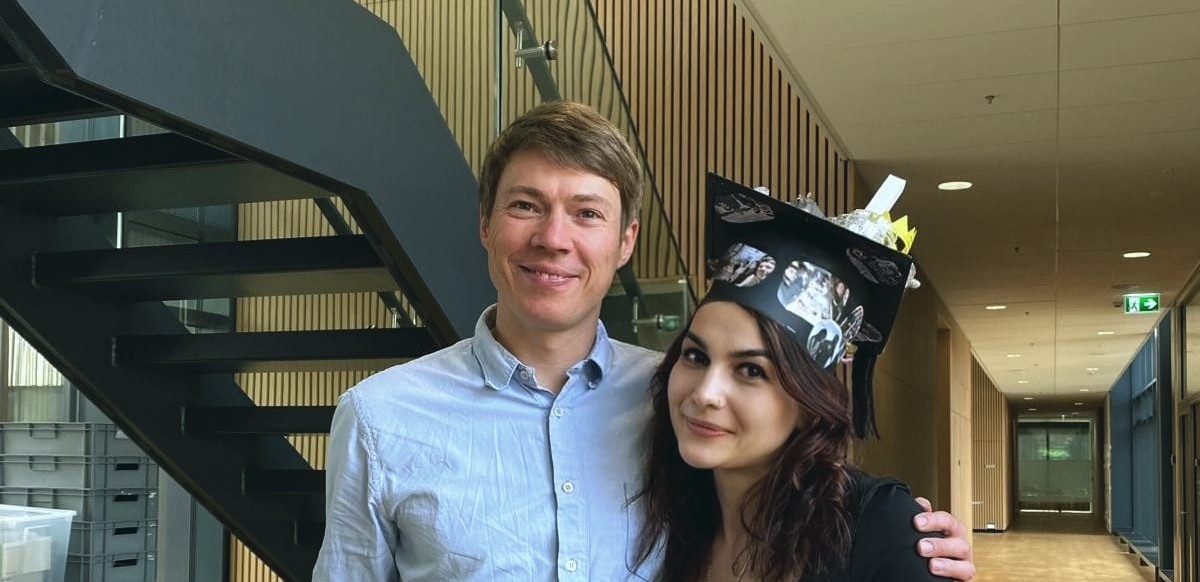
My PhD journey
My PhD journey was an incredible experience. It was filled with challenges, but also many rewarding moments. I had amazing support from my supervisor, Alexander Rauch, who guided me every step of the way. My colleagues were always helpful, and their encouragement kept me going. Working through complex problems and finding solutions taught me much about persistence and hard work. This journey wasn't just about gaining knowledge, but also about building strong relationships and learning the value of teamwork.
My PhD project was “Cellular TEAD1 activity as predictor for osteoblast lineage speciation and metabolic bone disease”. The overall aim of my PhD project is to identify molecular mechanisms at the single cell level that contribute to the progression of metabolic bone diseases and provide insight for clinical management as well as targets for clinical intervention. In a recent study, TEAD transcription factors have been suggested to be part of a huge transcriptional network in stromal cells that is crucial for osteoblast differentiation while inhibiting the differentiation of fat cells. TEADs transcription factors recruit YAP1 and TAZ, transcriptional coactivators under the control of the Hippo signaling pathway, known for its ability to promote osteogenic differentiation and inhibit adipogenic differentiation.
What did we find out?
The chromatin binding dynamics of YAP and TEAD1 imply a robust link of the Hippo signaling pathway with the stem cell gene program and the activation of osteoblast-selective genes. Both the binding of YAP1 and TEAD1 to chromatin is highly dependent on the nuclear abundance of YAP, indicating a cofactor-dependent dissociation of TEAD1. Cells treated with compounds that disrupt protein interactions of YAP1 or TEADs showed a diminished osteogenic capacity, suggesting TEADs as mediators of YAP1 action during osteoblast differentiation. Testing whether loss of TEAD1 could mimic the effect of YAP1 deficiency in human cells, we could show that knockout but not siRNA-mediated silencing abolished osteogenic differentiation. Interestingly, primary cells from mice derived from bone and marrow compartments showed strong differences in TEAD1 dependency of osteogenic differentiation, with bone-derived cells requiring TEAD1 while marrow-derived cells showed elevated osteogenic commitment upon TEAD1 ablation. Using, osteoblast-specific Tead1 knockout mice, we could not confirm the role of TEAD1 in the acquisition of bone mass and structure as well as in bone regeneration upon mono cortical defect.
Taken together, chromatin binding dynamics and pharmacological inhibition of YAP1-TEAD interactions indicate a putative role of TEAD1 transcription factor in the osteogenic commitment of stromal cells. However, the impact of genetic ablation of TEAD1 on osteoblast differentiation is highly context-specific in vitro and not conclusive in vivo. We propose that TEAD transcription factors, most likely in a highly redundant manner, mediate the effects of the Hippo signaling pathway on lineage commitment of stromal cells.
How did we do it?
To uncover how signaling networks within stromal cells control lineage speciation, bone strength, and whole-body metabolism we used in-depth molecular characterization of the putative lineage-determining transcription factor TEAD1 and phenotyping of conditional knockout mice. We used ChIP-seq and RNA-seq to estimate the binding dynamics of TEAD1 and YAP1 to the chromatin. Four different inhibitors were used to disrupt TEAD1-YAP1 interaction and establish the effect on osteoblast and adipocyte differentiation in human BM-MSCs. We generated osteoblast and adipocyte-specific Tead1 knockout mice using Tead1 floxed, Runx2-Cre, and Adipoq-Cre mice to validate the pro-osteogenic and anti-adipogenic effects of TEAD1 in vivo. (μ)CT analysis and histology were used for phenotyping of bone and fat tissue at baseline. In addition to these basal effects, we estimated the impact of TEAD1 on bone and fat biology under tissue repair and remodeling conditions by challenging conditional Tead1 knockout mice in bone fracture models and high-fat diet, respectively.
Perspective and potential use of our research in the clinic.
New observations indicate that targeting YAP1-TEAD activity can have a strong potential for stem cell and regenerative medicine. Since inhibition of YAP1-TEAD activity is sufficient to suppress osteogenic activity, its application might be attractive for con-genital bone diseases with gain-of-function mutation driving accelerated osteoblast differentiation such as in fibrous dysplasia or craniosynostosis. Having defined gene signatures that are specifically sensitive to the individual TEADs together with the in-depth characterization of loss of function models in vitro and in vivo, might hold the potential to define and design stromal cell populations that promote bone formation and regeneration This would in turn allow cell-based therapies to combat bone loss and to promote fracture healing in osteoporotic patients or subjects with strongly reduced mobility.